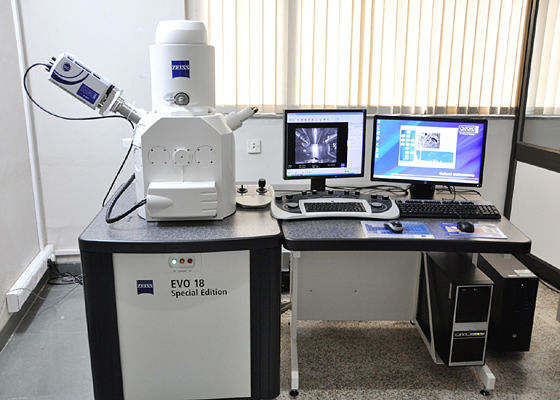Energy Dispersive X-ray Spectroscopy
Energy Dispersive X-ray Spectroscopy (EDS) is a chemical analysis method that can be coupled with the two major electron beam based techniques of Scanning Electron Microscopy (SEM), Transmission Electron Microscopy (TEM) and Scanning Transmission Electron Microscopy (STEM).
EDS, when combined with these imaging tools, can provide spatially resolved elemental analysis from areas as small as 1 nanometer in diameter (STEM). In SEM, the analysis volume is larger and ranges in volume from perhaps 0.1 to 3 microns. The impact of the electron beam on the sample produces x-rays that are characteristic of the elements present on the sample. EDS analysis can be used to determine the elemental composition of individual points, line scans or to map out the lateral distribution of elements from the imaged area.

Ideal Uses of EDS
- Elemental composition of small areas using SEM/TEM imaging
- Defect identification/mapping
Strengths
- Quick “first look” compositional analysis
- Versatile, inexpensive, and widely available
- Quantitative for some samples (flat, polished, homogeneous)
Limitations
- Generally, semi quantitative analysis is possible
- Sample size must be compatible with SEM/TEM
- Samples must be vacuum compatible (not ideal for wet organic materials)
- Analysis (and coating) may restrict subsequent surface analysis
- Numerous elemental peak overlaps are possible, careful review of the spectra is required
EDS Technical Specifications
- Signal Detected: Characteristic X-rays
- Elements Detected: B-U
- Detection Limits: 0.1-1 at%
- SEM Sampling Depth: 0.1-3 μm
- STEM Sampling Depth: ~0.1 microns (foil thickness)
- Imaging/Mapping and Line Scans: Yes
- Lateral Resolution: 1-2 nm for STEM-EDS, ≥0.1 μm for SEM EDS
